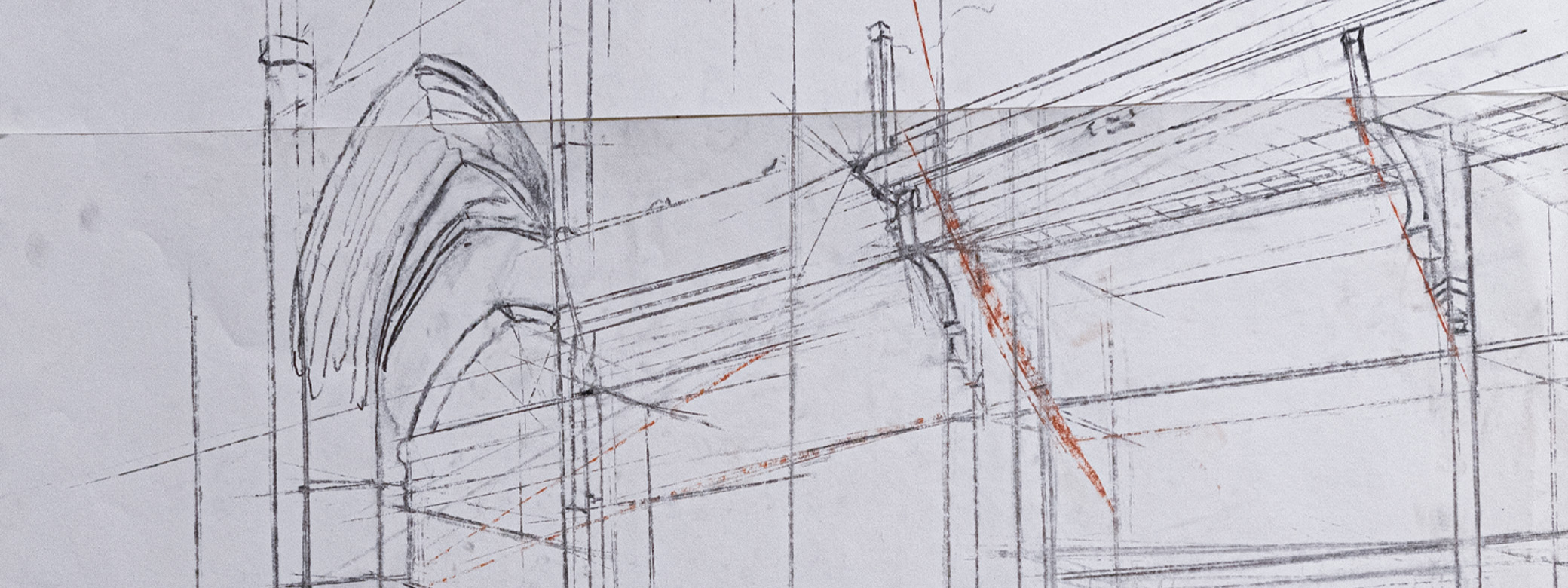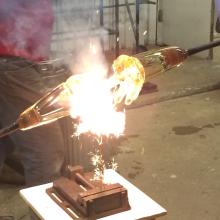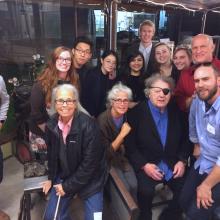It took nearly nine years, but all the effort has been worth it. On November 3, the College of Arts & Sciences and the School celebrated the completion of the glass facilities that have become integral to our 3D4M: ceramics + glass + sculpture Program. The idea to add glass to the School's curriculum began in 2002, and it started to really gain traction in 2007 with the creation of The Dale Chihuly Endowed Chair of Glass. Many of the donors who helped make glass a part of the School were in attendance at the event.
Associate Professor Mark Zirpel was hired in 2008 to start teaching and creating the glass facilities. The initial plan to collaborate with the Pratt Fine Arts Center was short lived due to the infamous economic downturn that began shortly after Zirpel’s arrival. Working closely with colleague Amie McNeel, he has been relentless in developing an impressive curriculum and facilities. He started by gathering equipment for kiln forming then collecting the variety of items needed for cold work. All of this was installed at the CMA (Ceramic and Metal Arts Building) while a flameworking studio was established in the Art Building. The development of hot glass was next.
Sean O'Neill was hired in 2012 as the Instructional Technician for the glass portion of 3D4M. He has aided Zirpel in the figurative and literal heavy lifting needed to make hot glass a reality as well as many day-to-day tasks. O'Neill's connections with well-known local company Glassybaby brought about the donation of two used Stadelman furnaces by owner Lee Rhodes. With extraordinary support from Dean Robert Stacey, the electrical service was upgraded and a 1000-square-foot work space at the CMA was laid out with a complete array of specialized tools and equipment. The Stadelman began to glow in spring of 2016 when hot glass finally became a reality at the UW.
The event in early November was a celebration of a vision that could only be realized with the passion, patience, and hard work of faculty, staff, students, deans, and directors in addition to the backing of extraordinarily dedicated and generous community members. We now have all of the pieces in place to support a creative environment that pushes our understanding of how a material and process can develop new forms, suggesting new meanings and future directions for the use of glass in alignment with the 3D4M mission.
While this event was only open to a small number of invited guests, there will be an opportunity during winter quarter to see the glass facilities yourself. The 3D4M Program is planning an open house; mark your calendar for the evening of Tuesday, February 21, 2017.



